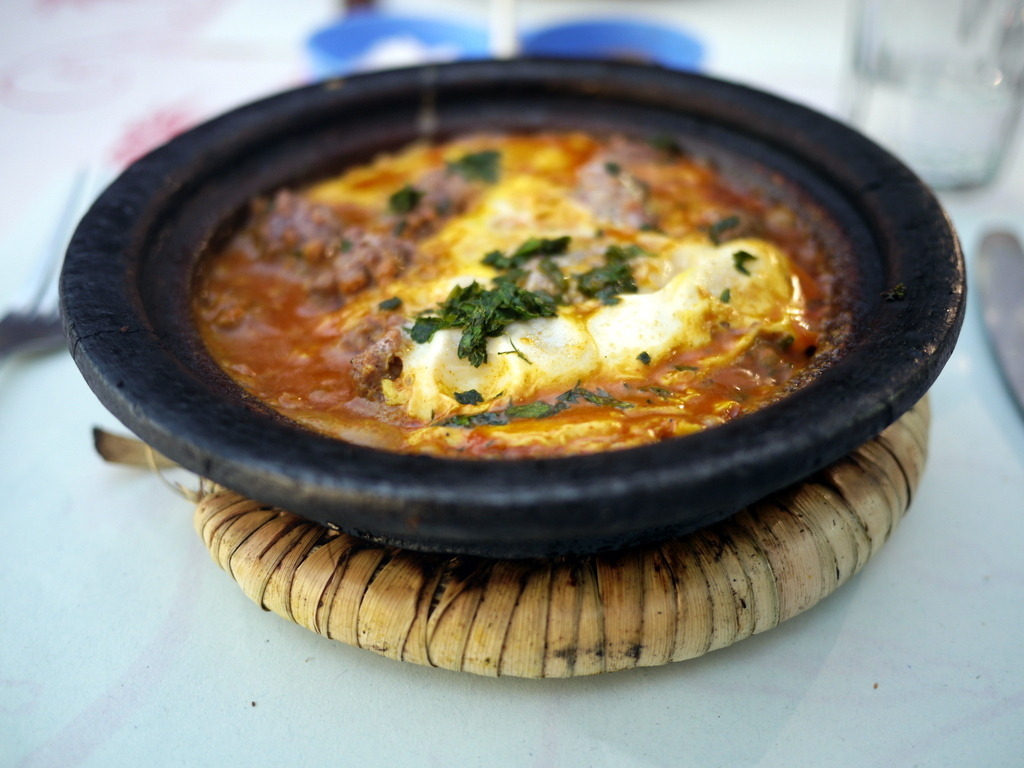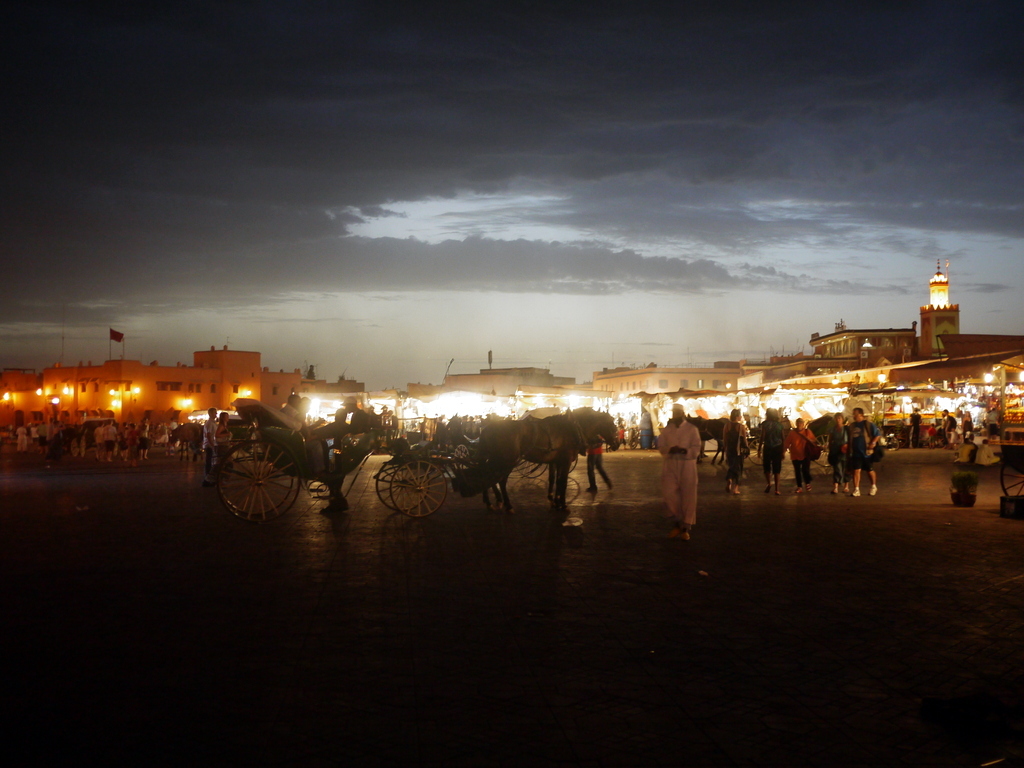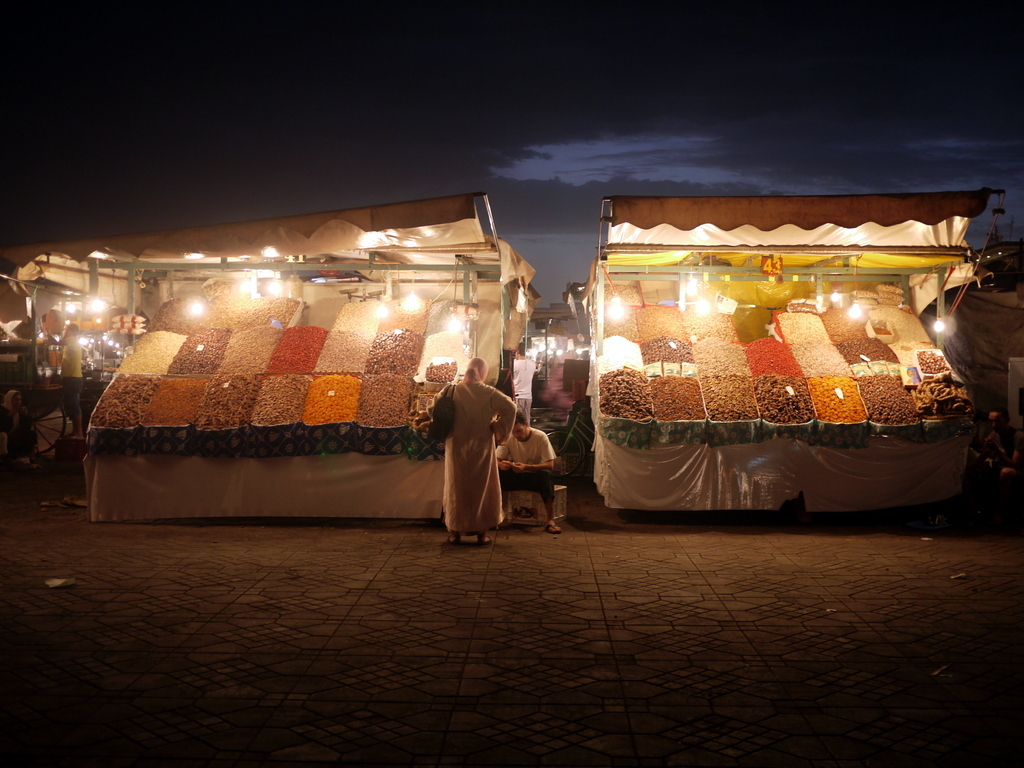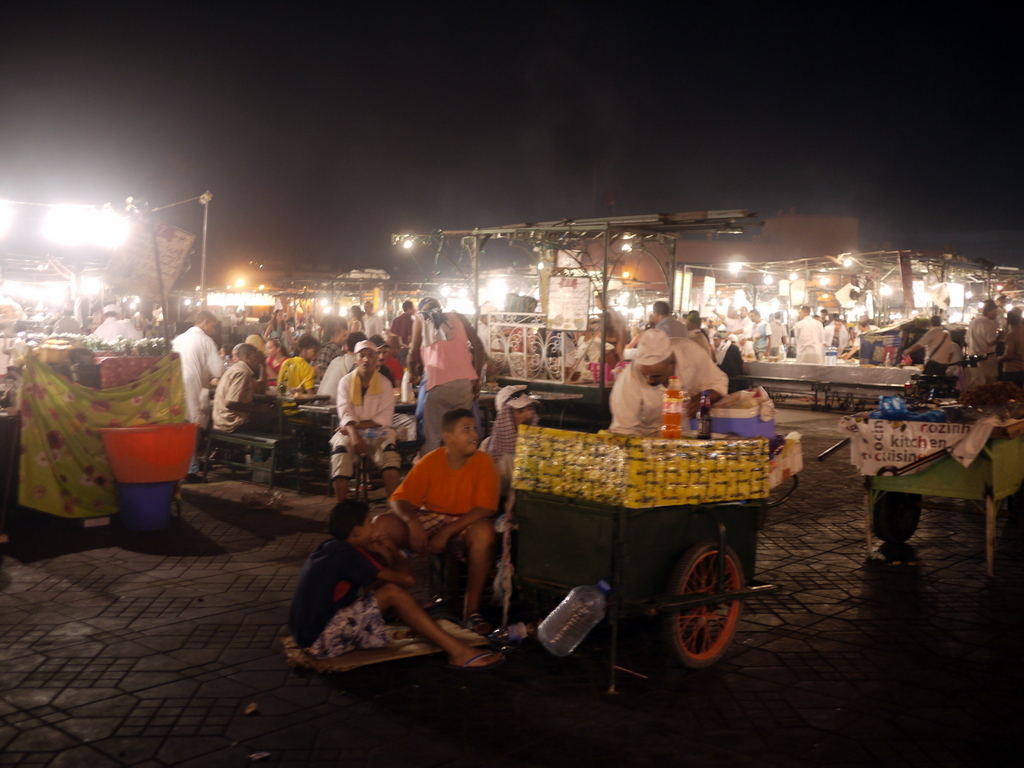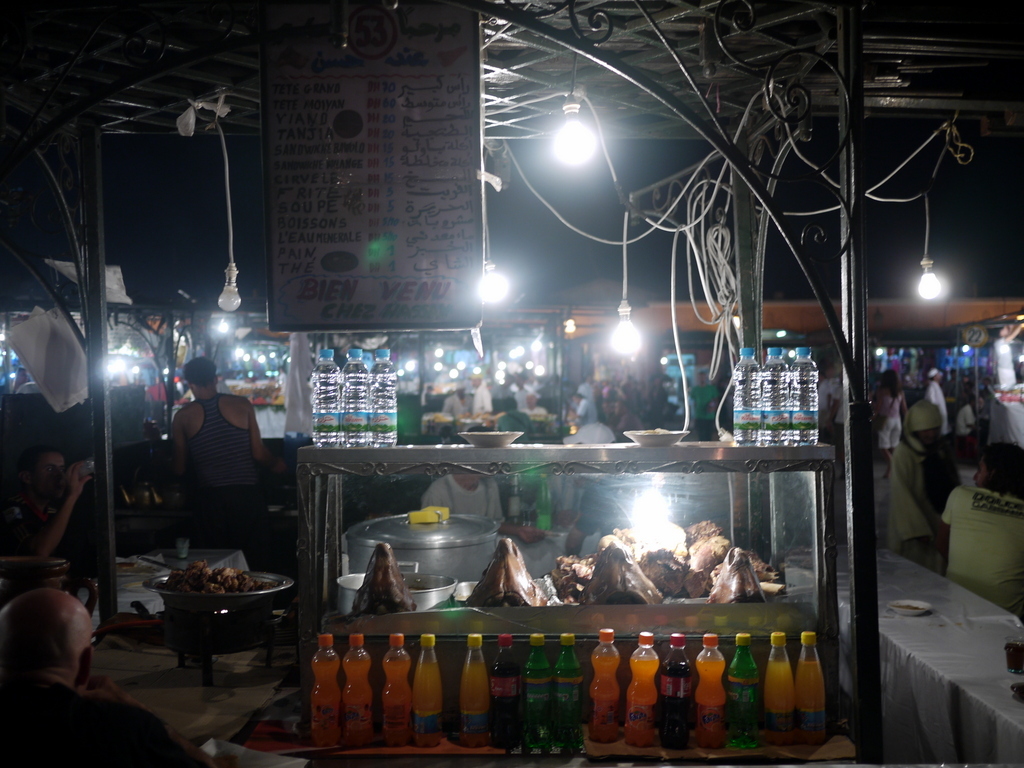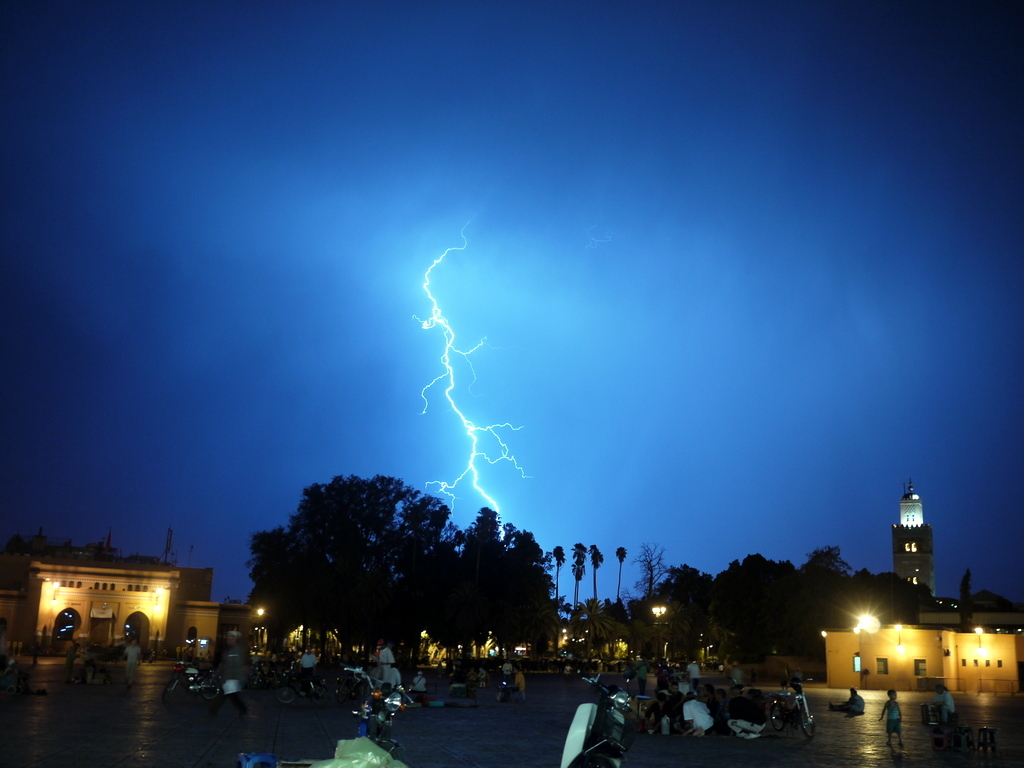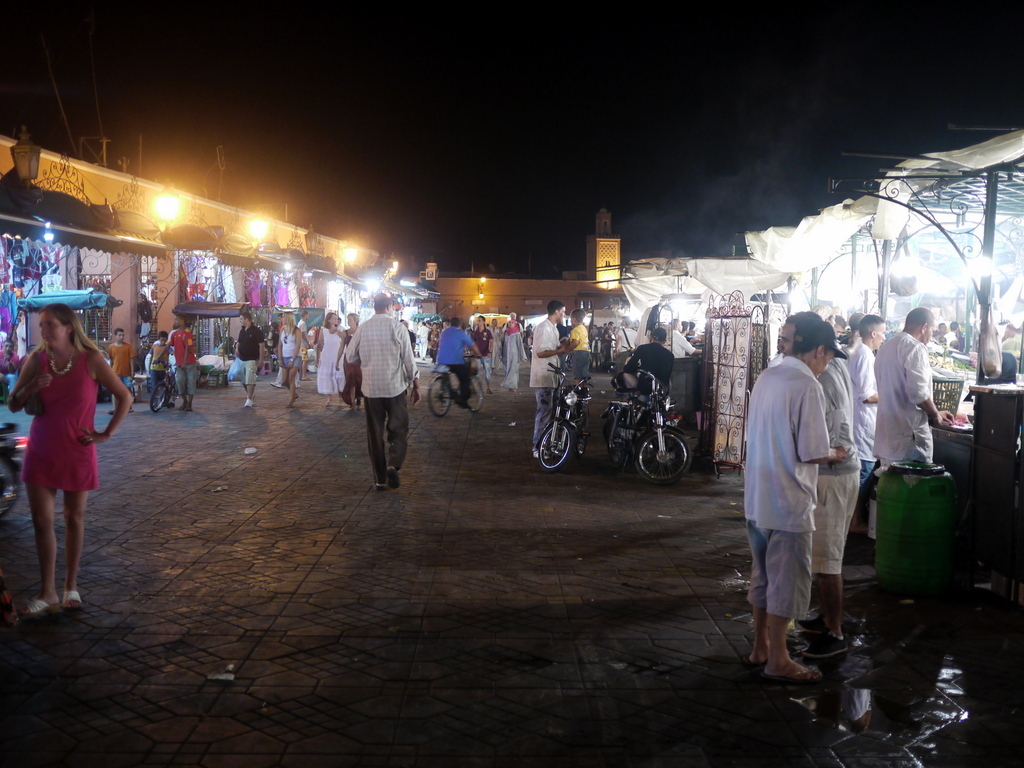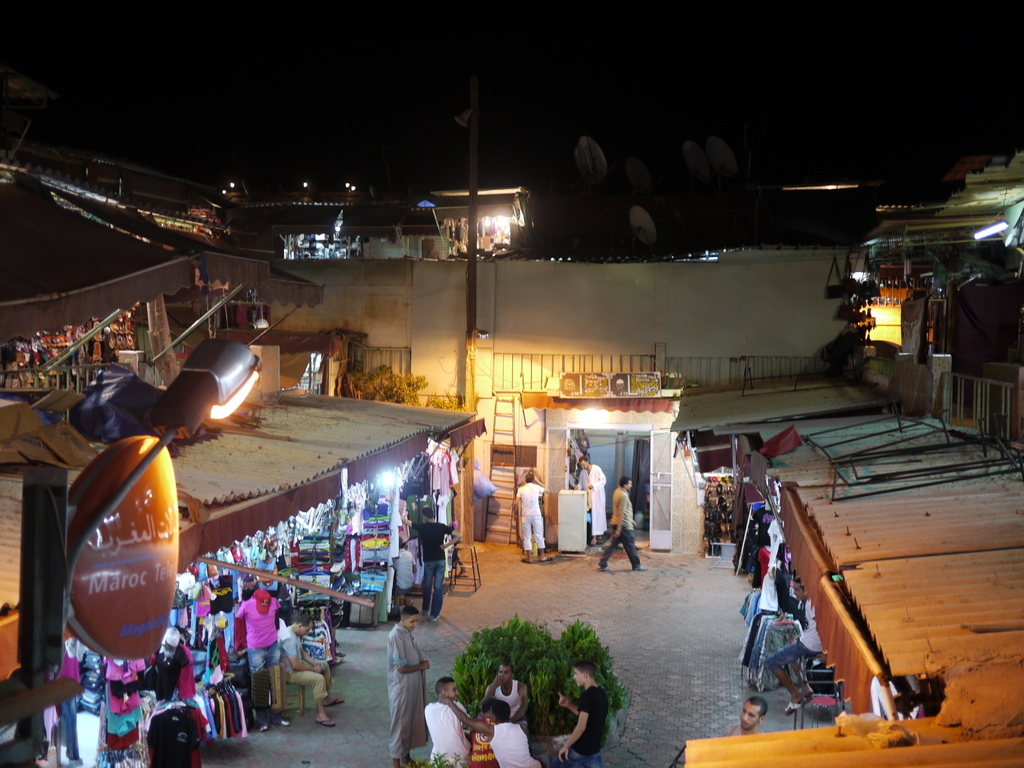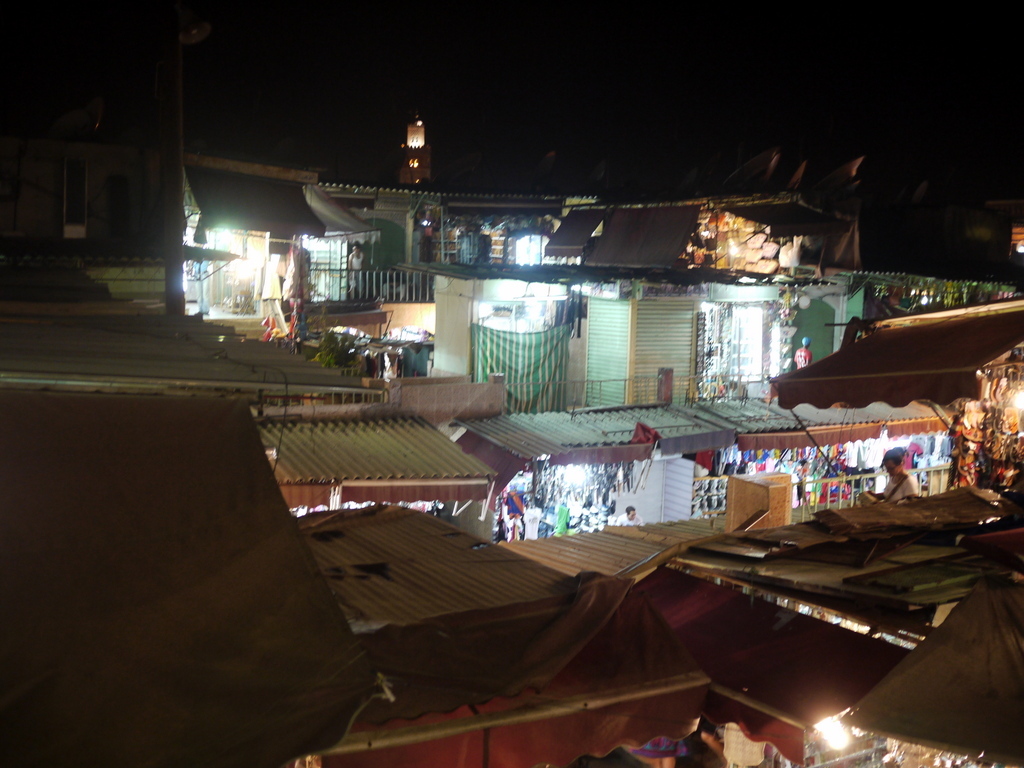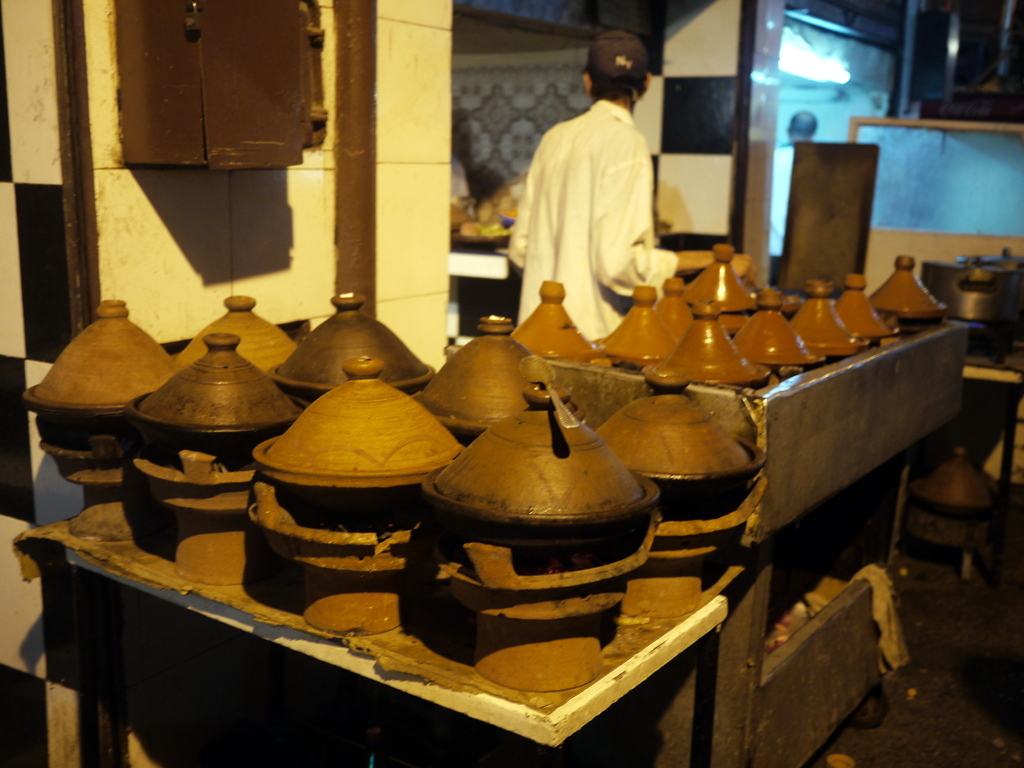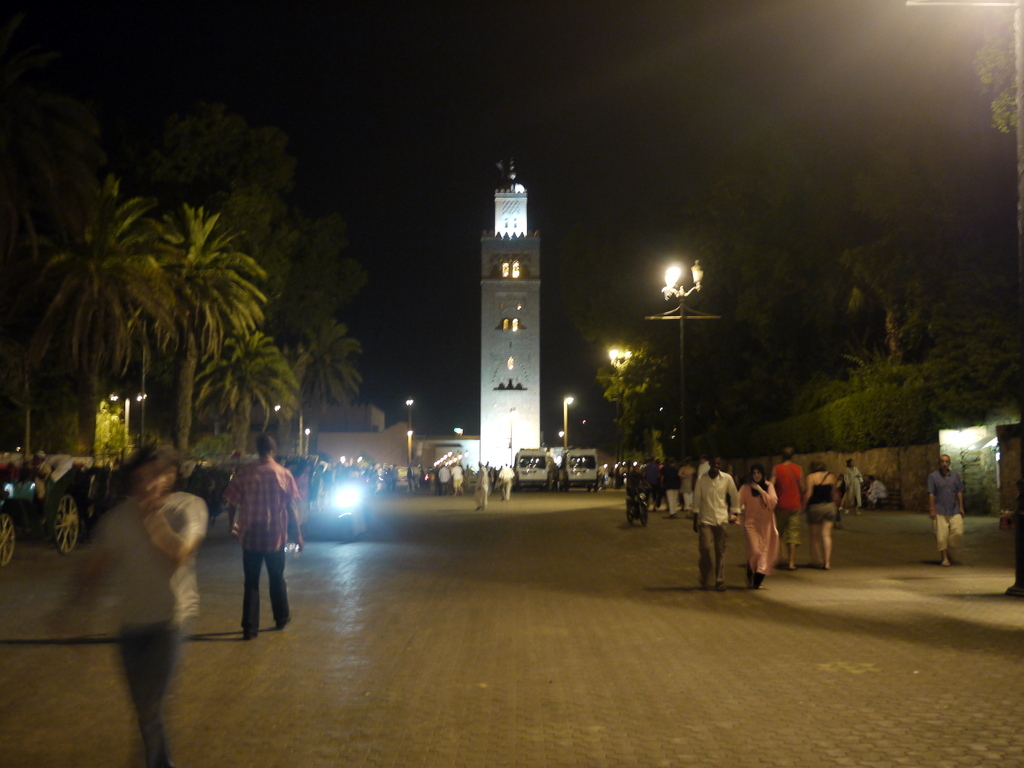Morocco is by far the most “different” country that I have been to compared to what I am used to. I went during Ramadan, which as a non-Muslim was a very interesting experience. The locals would not be doing much during the days, they you would see everyone come out as night approached, clearly hungry from the day of fasting. When the time came each night, the bell would toll, and throughout speakers across the city you would hear someone praying, what exactly I could not understand. Once he was done, everything sprung to life. People started eating, vibrancy filled the streets and it completely changed.
I must say I had the upmost respect for the people doing Ramadan through this period. Every day the temperatures were soaring above 40 degrees Celsius, and, as you will see in later posts, some people were going about their normal lives during this. On several days we would be spending most of the day being driven through desert to other cities in the country, and the driver would not eat or drink a thing. I always felt guilty that I was carrying around a bottle of water, keeping myself hydrated in the intense, dry heat while these guys were working and getting through it.
The influence of the French was obvious, not most in the fact that most of the signs and people are bilingual – Arabic and French. The people were generally friendly, although there were some interesting encounters – I suppose when you travel somewhere that is poorer than many places, people are going to want a buck off you. One thing which was somewhat bemusing was the prices of drinks at stores. If you go to an actual supermarket or place outside of the old city it’s a different story but in the old city, which is tourist central, if you go to a corner store and want, say a bottle of Coke, you’ll pay more than the retail prices which is funny because the retail price is written quite plainly to see, on the bottle. It will say 20 Dirham for example on the bottle and they guy will want to charge you 25 Dirham. When you point out the discrepancy the first time it happens to you, the guy just says to you “tourist price”! Then you actually stop and think about it and realise that it’s something like GBP 20p extra that you’re paying and you don’t really care about it.
No free advice or directions in this country that’s for sure, and unfortunately you do have to watch out for scams. There are a lot of tourists in Morocco, and there are unscrupulous operators that try to trick unsuspecting passers-by. You just have to be more aware than you would in some other places – by far the majority of people are friendly and proud of their country. One of my friends and I were invited into a stall in the souk by one shopkeeper for example, and he dressed my friend in traditional Moroccan female clothing, while giving us multiple cups of mint tea (which is the big drink in Morocco) and chatting to us. After about half an hour, we left and he never pressured us to buy anything – he was just a really nice guy. So, just like anywhere, there are all kinds of people. Just be aware, and have fun 🙂
This blog post focuses of the bustling Medina (Old Town) of Marrakech.
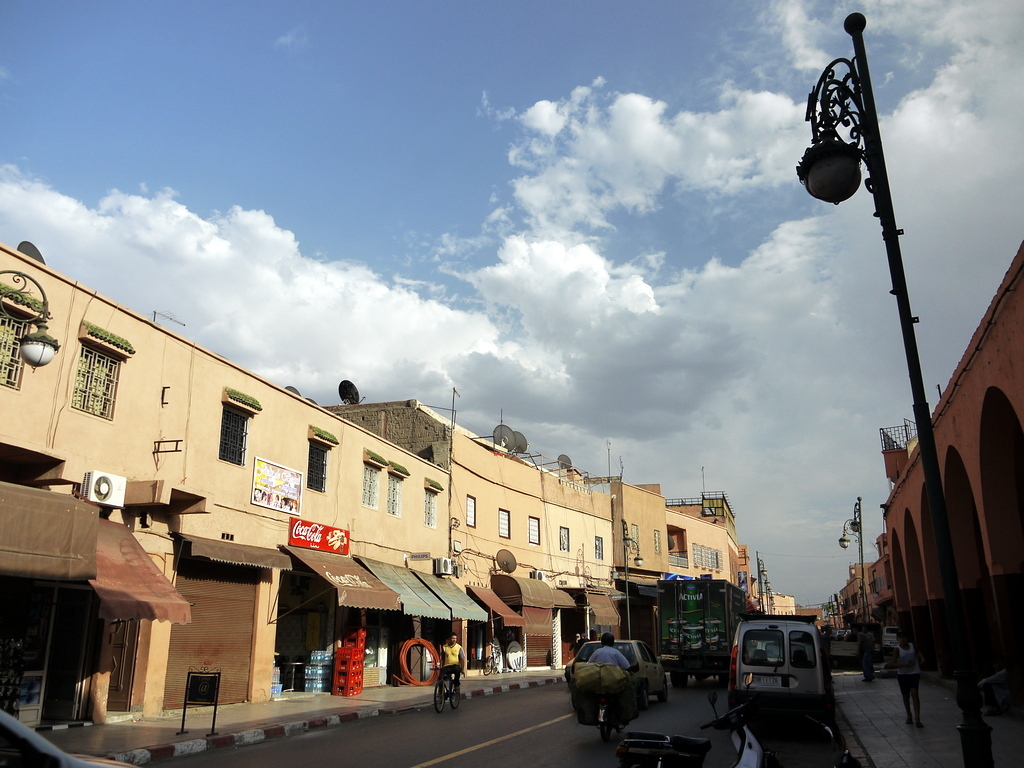
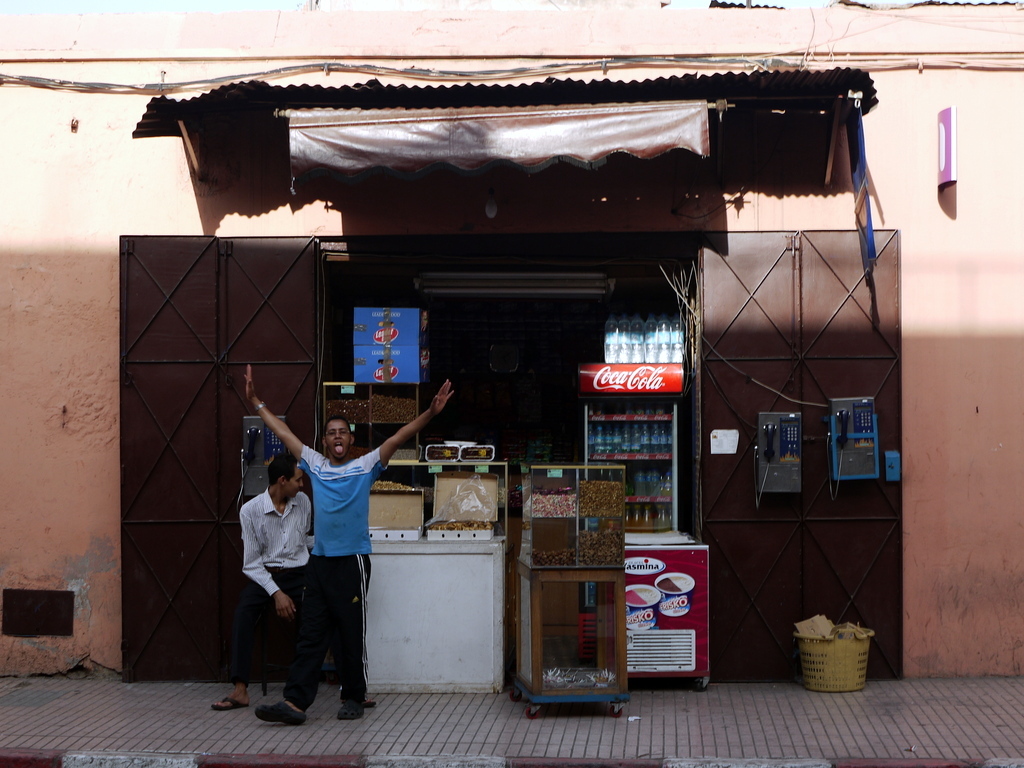
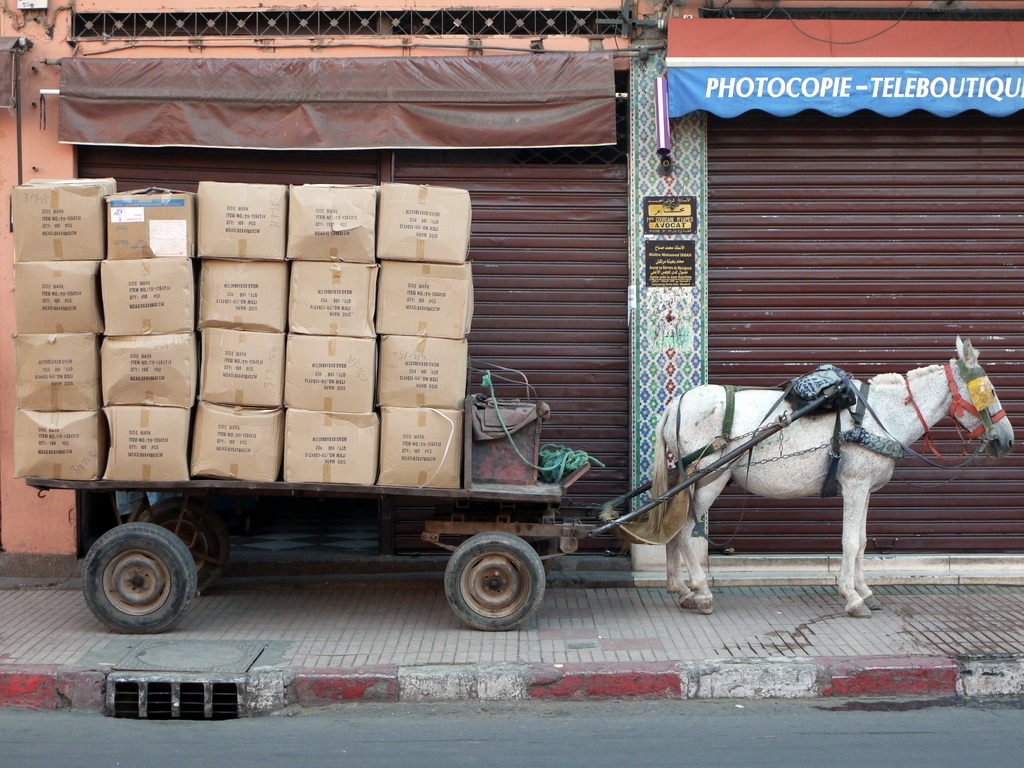
The Koutoubia Mosque is the largest Mosque in Marrakech and was built between 1184 – 1199. It’s a beautiful structure, and come prayer time in the evenings, all of the grounds around it are surrounded by praying locals, with the prayers blasting out of the speakers around the Mosque for all in the vicinity to hear.
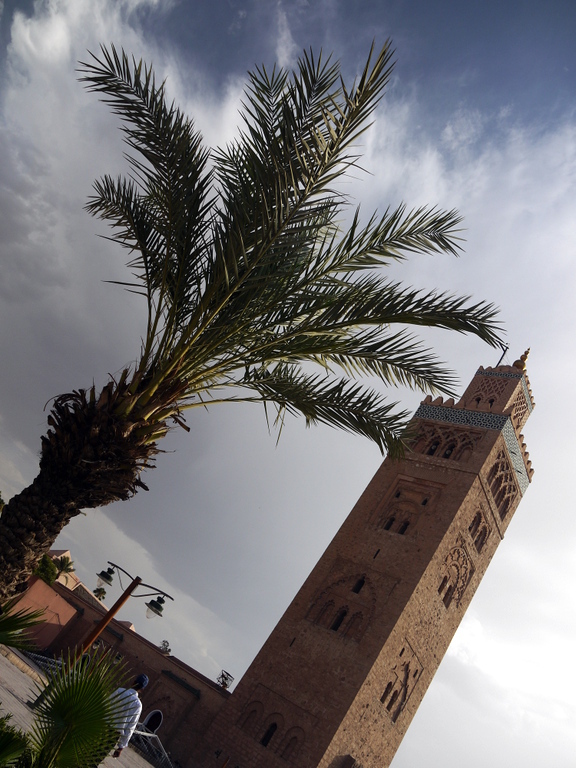
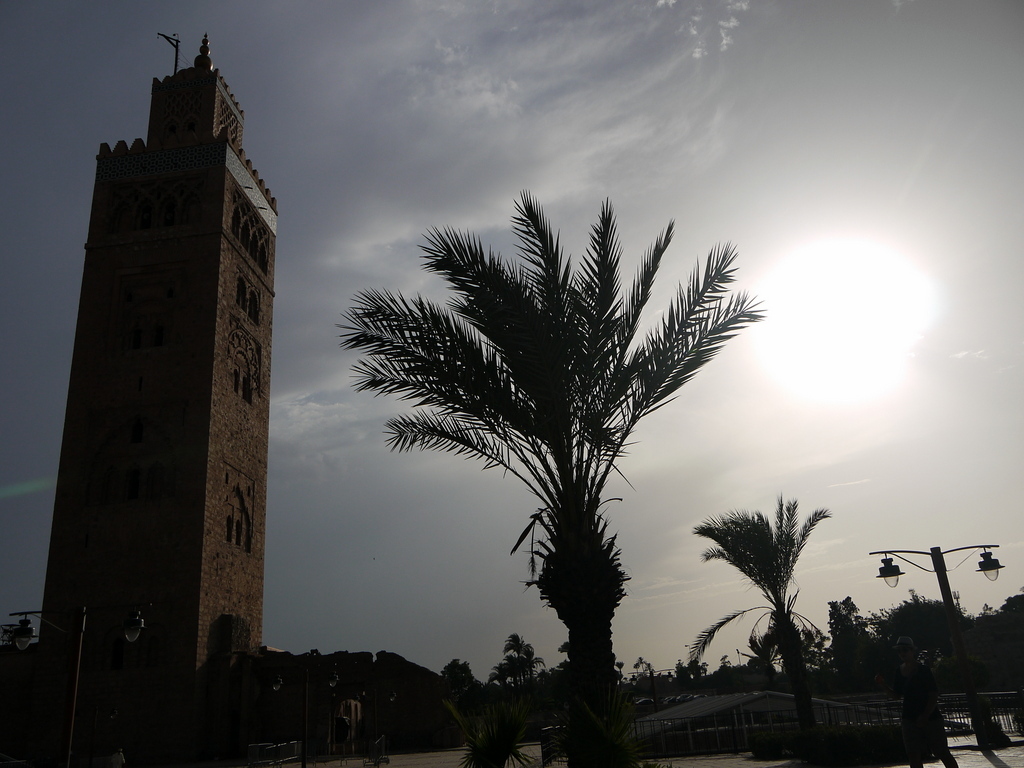
The old fortified city or “Medina” is what most people come to visit, and outside of this, which will be the subject of a later post of mine, is the more modern city, which was really expanded by the French and contains apartments, office towers, global brands and shops etc. It really is like two cities in one.
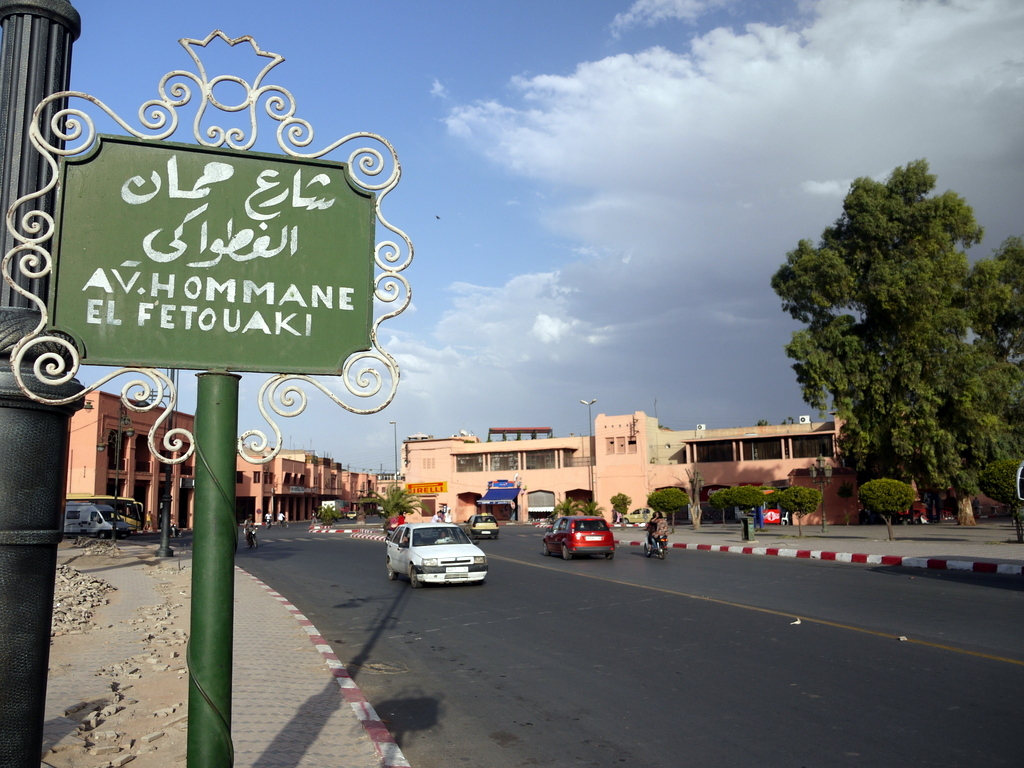
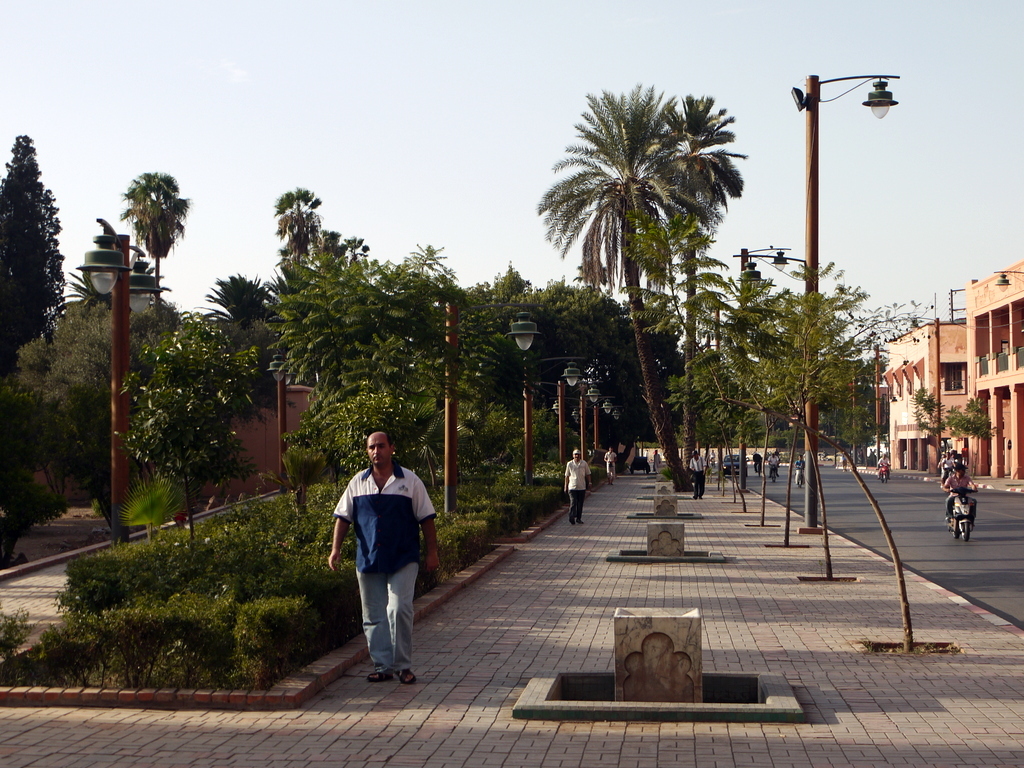
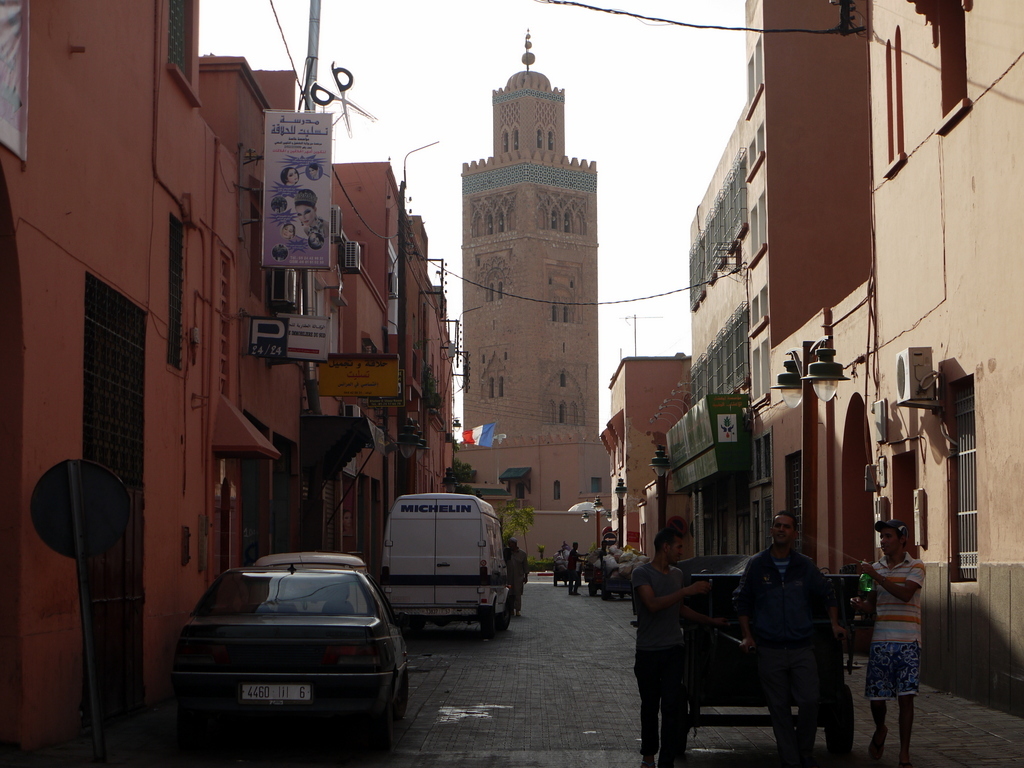
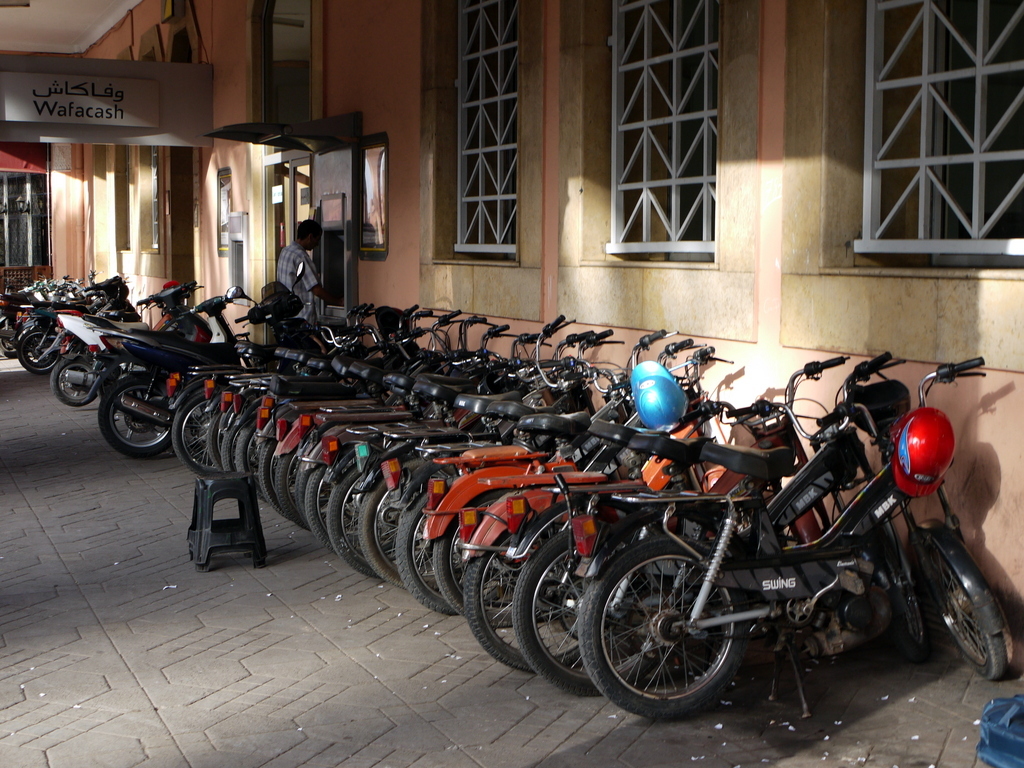
Jamaa el-Fnaa is the main square in Marrakech, and is relatively quiet during the day – although I put this down to both the heat and the fact that it was Ramadan. There is all kinds of stuff going on here. Fresh juice stalls, snake charmers, story tellers, dancers and the like do their thing. As night approaches, a vast number of food stalls fill the square, with continuing entertainment on the outside of it. The square is UNESCO heritage listed, for its intangible qualities:
“The spectacle of Jamaa el Fna is repeated daily and each day it is different. Everything changes – voices, sounds, gestures, the public which sees, listens, smells, tastes, touches. The oral tradition is framed by one much vaster – that we can call intangible. The Square, as a physical spaces, shelters a rich oral and intangible tradition.” – Juan Goytisolo, May 2011.

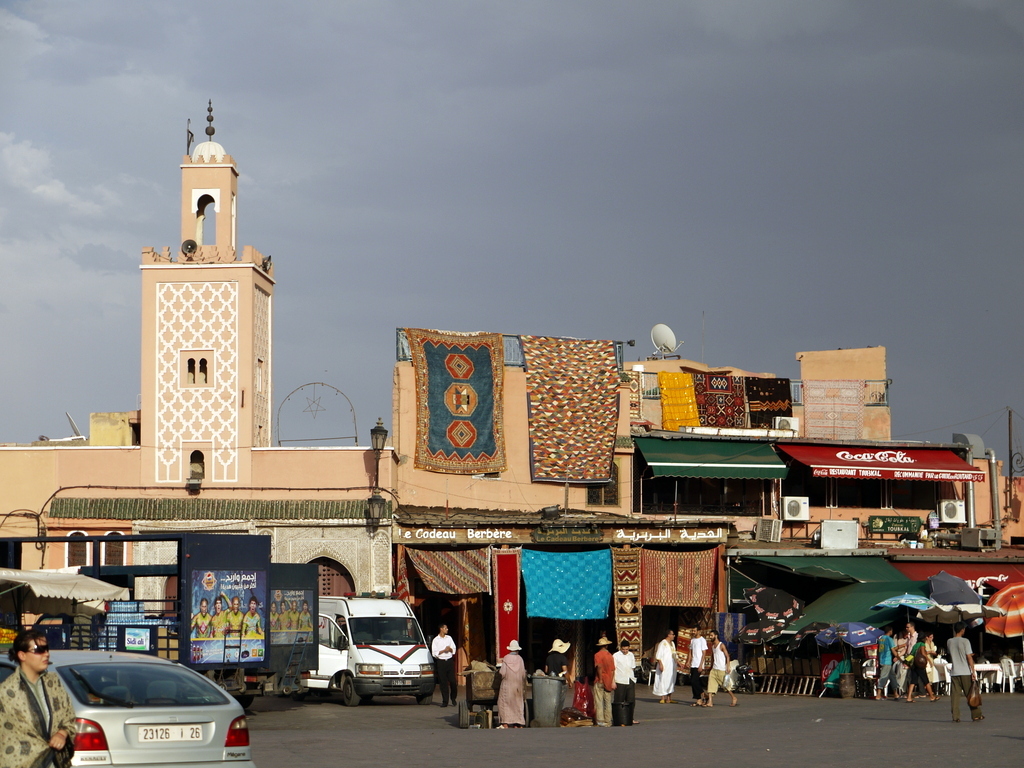
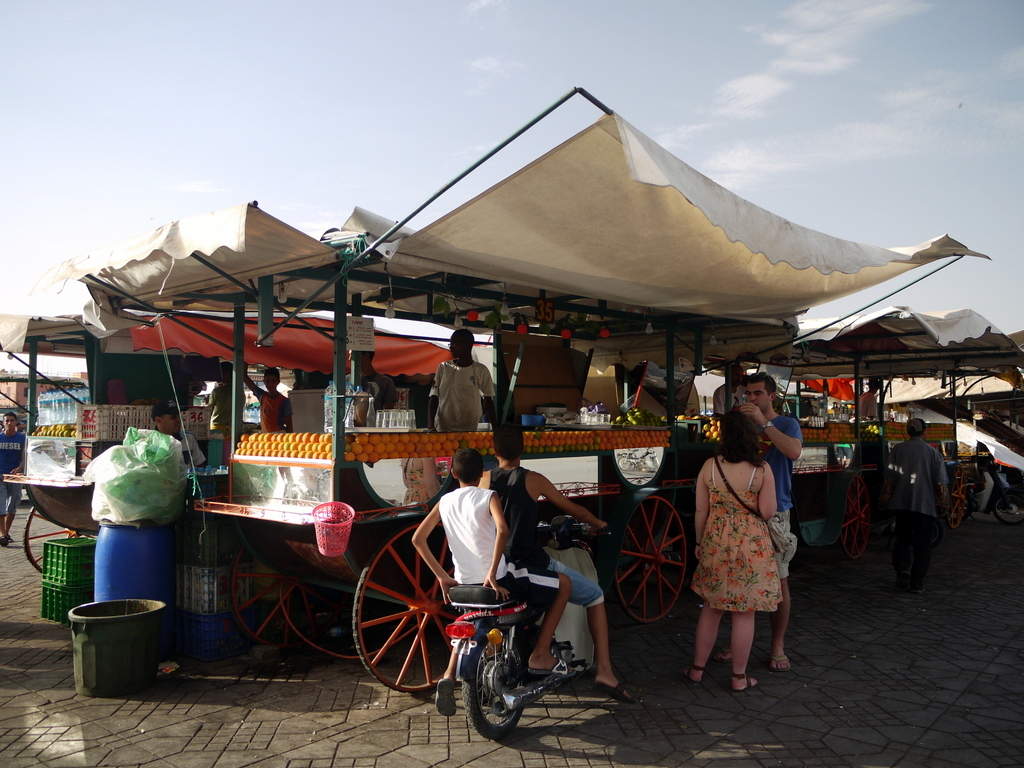
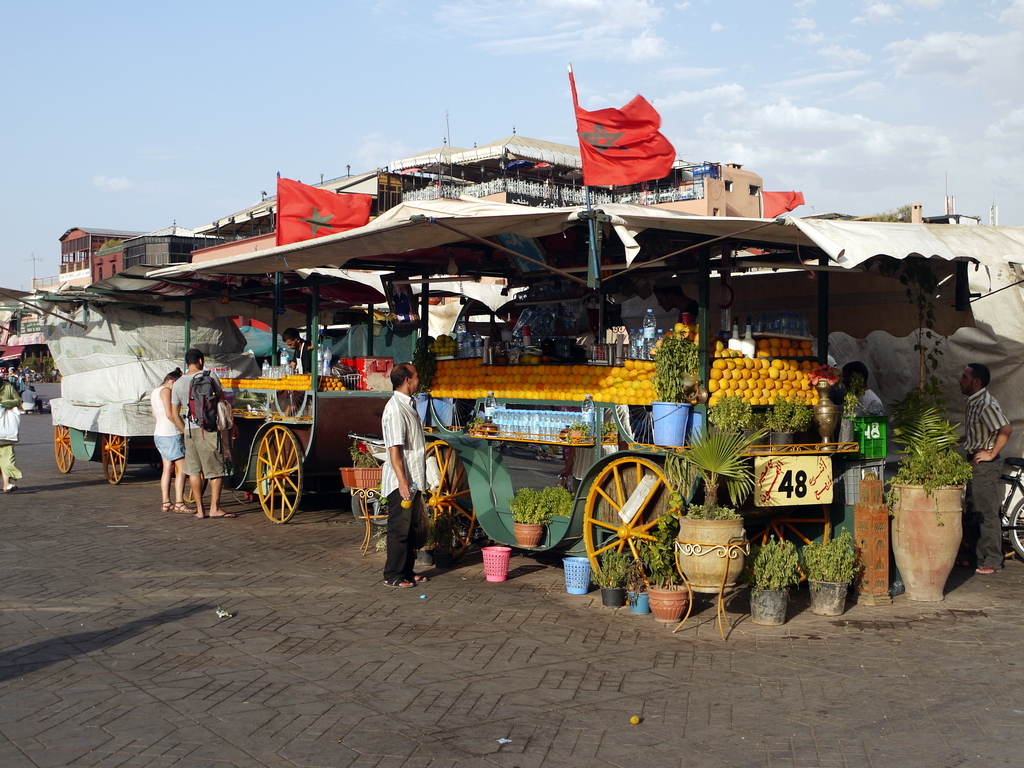
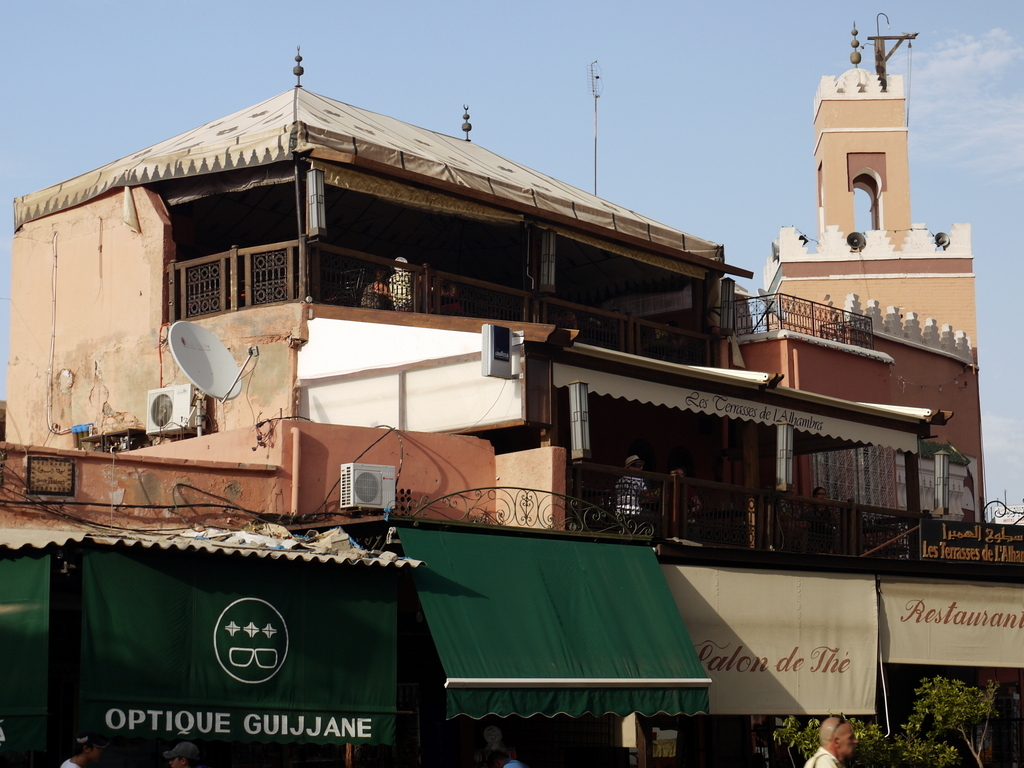
The souk in the old city is a huge market where all kinds of goods are traded. It’s a labyrinth of proper and makeshift passageways, twists and turns. Once you are in there it’s actually quite difficult to find your way out again. It truly is a maze and you find all kinds of interesting things in there. When you combine the people, the stalls, the noise, the smells and the constant stream of scooters making their way through, you get a truly unique experience. Be prepared to bargain – hard!

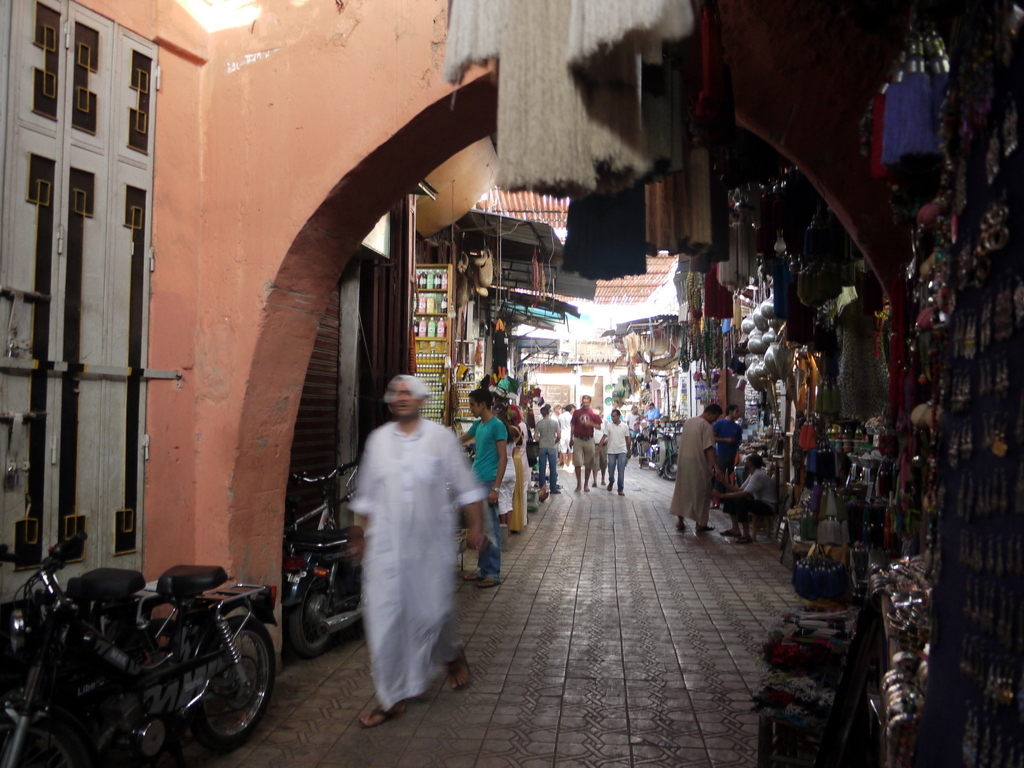
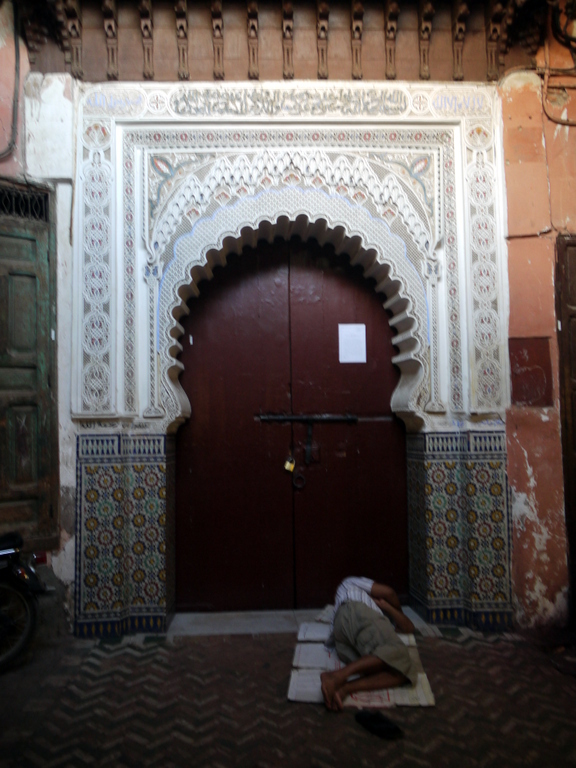
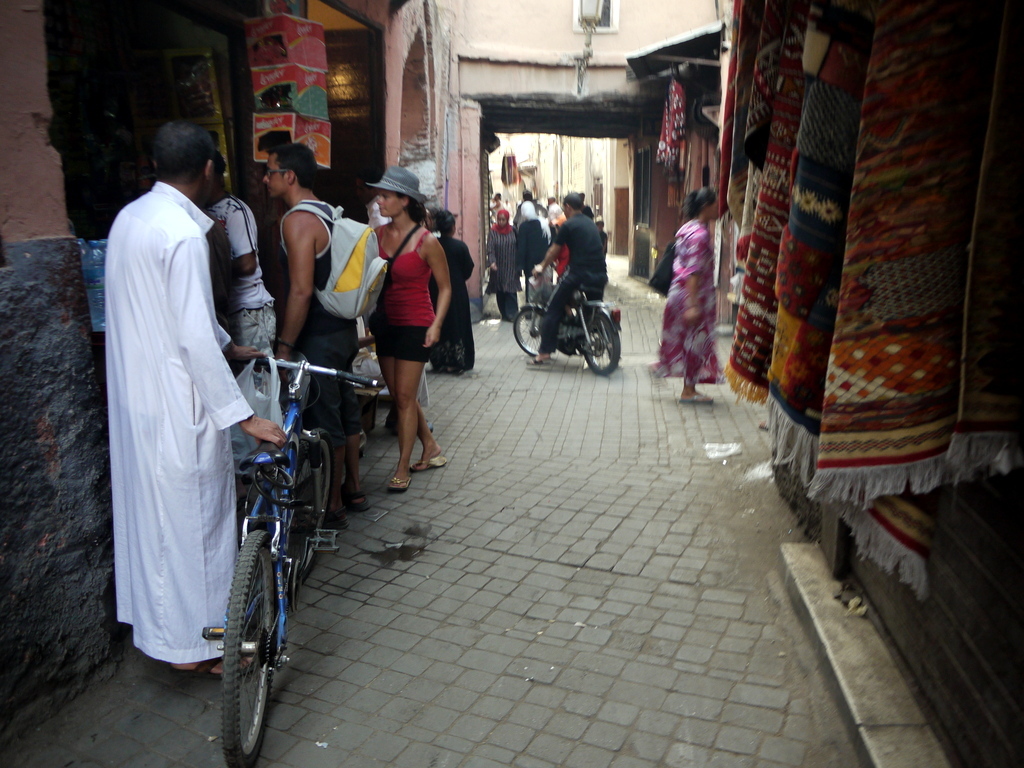

Finally found an exit!
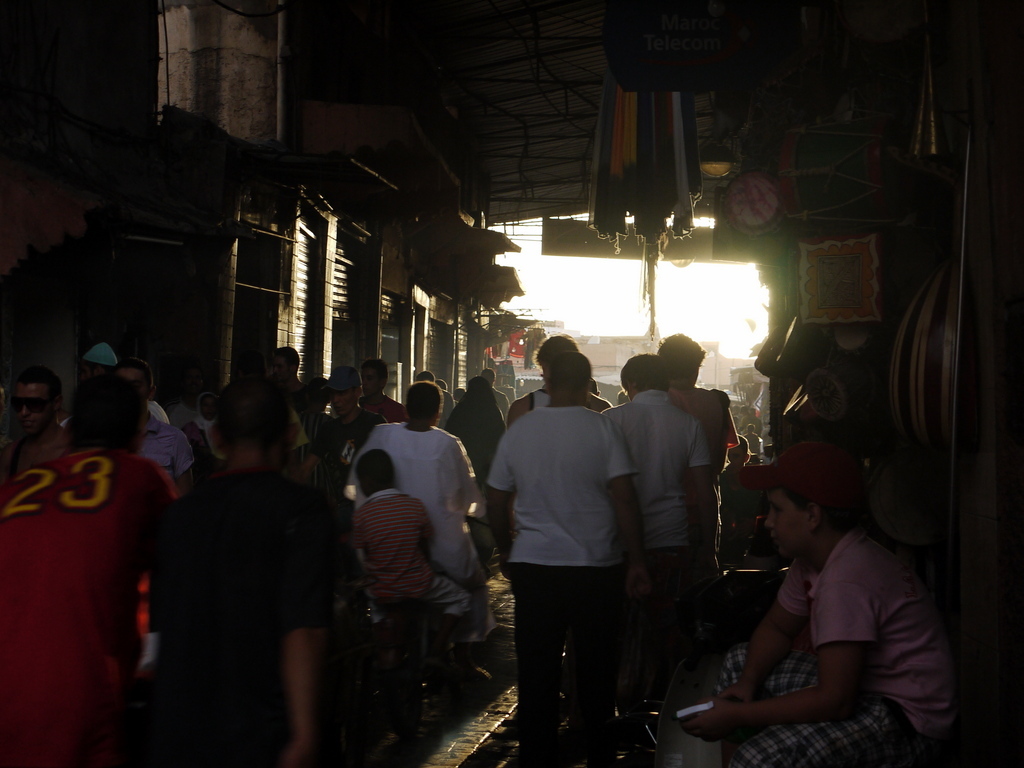
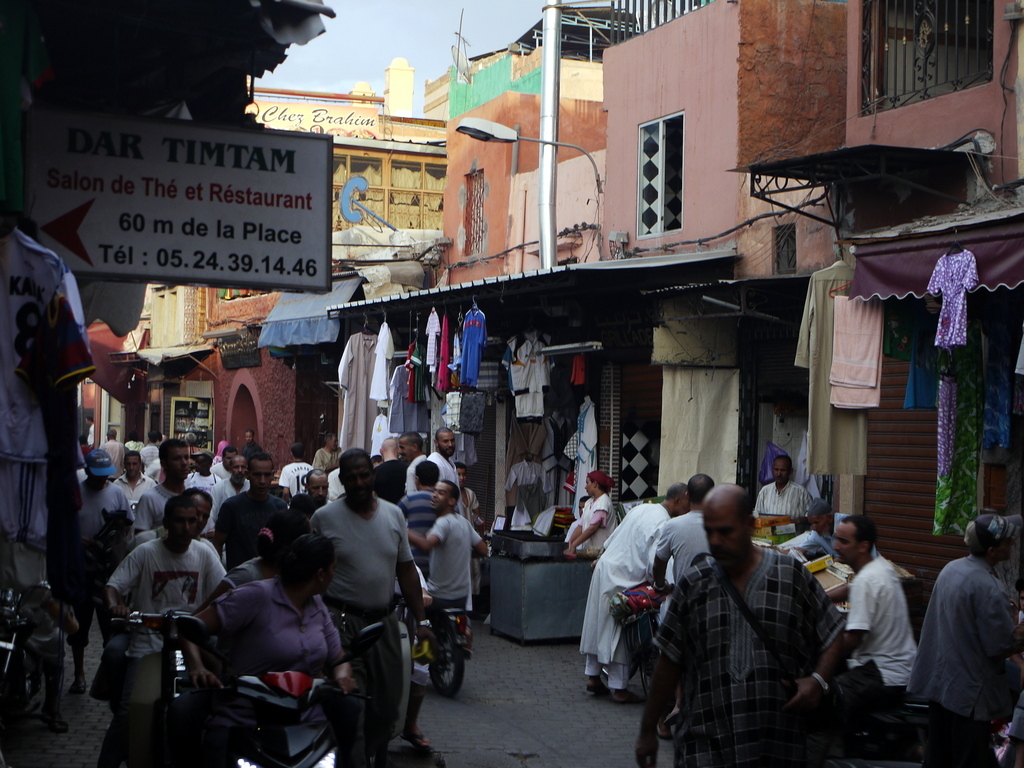
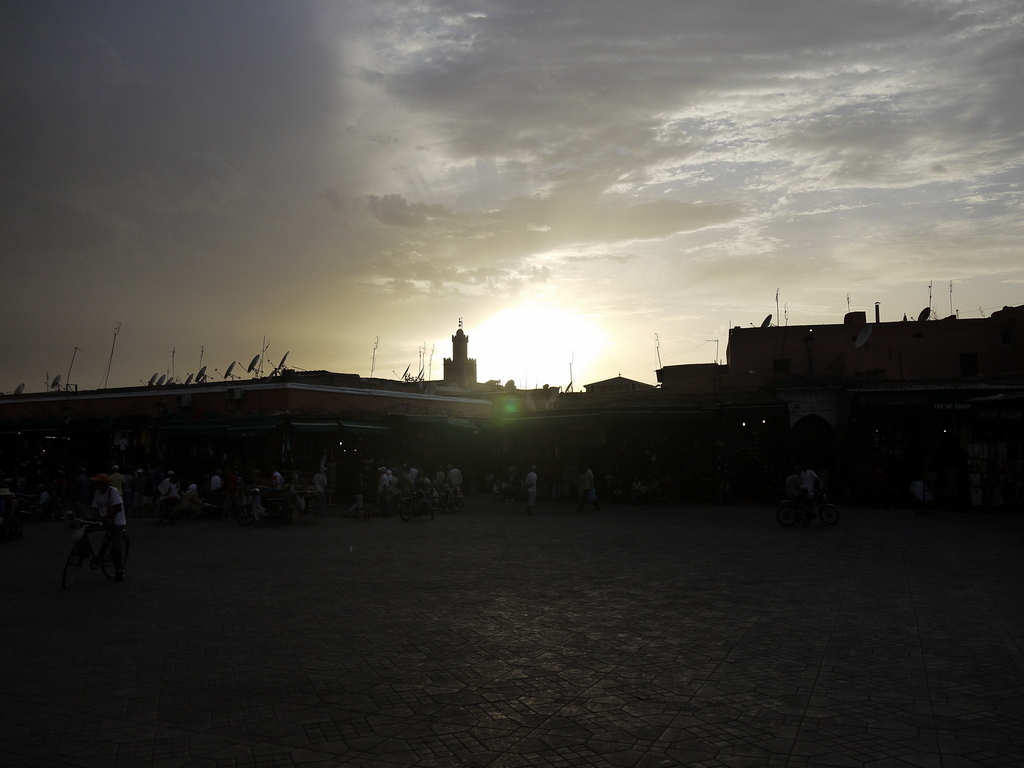
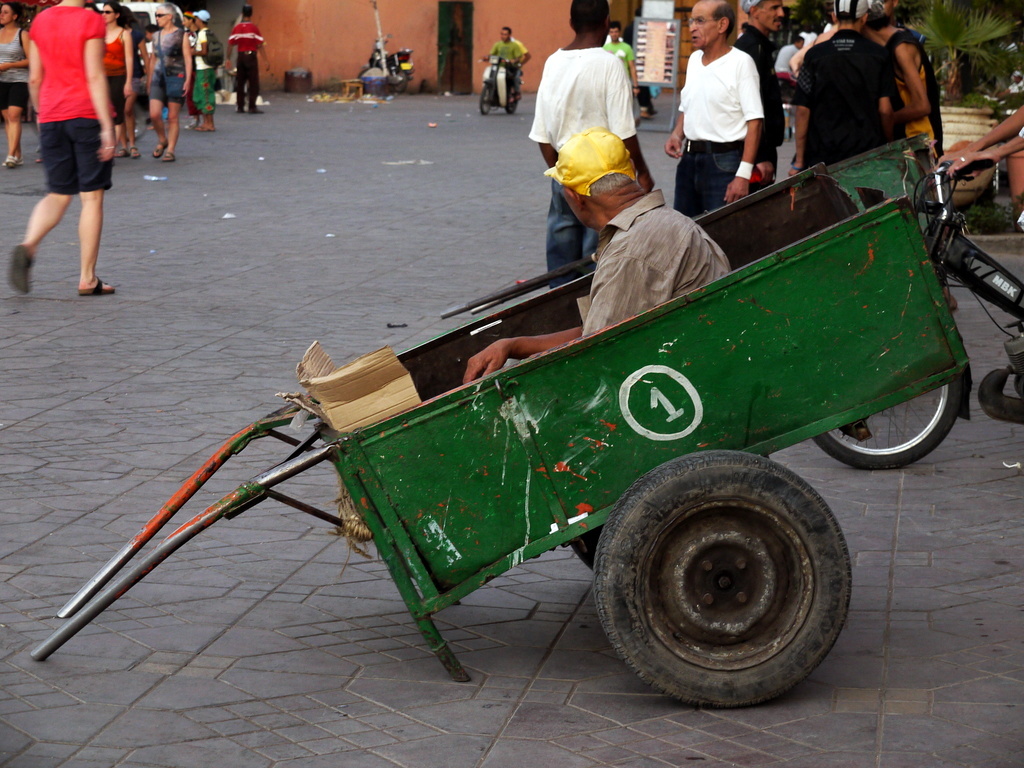
The ubiquitous tagine.
